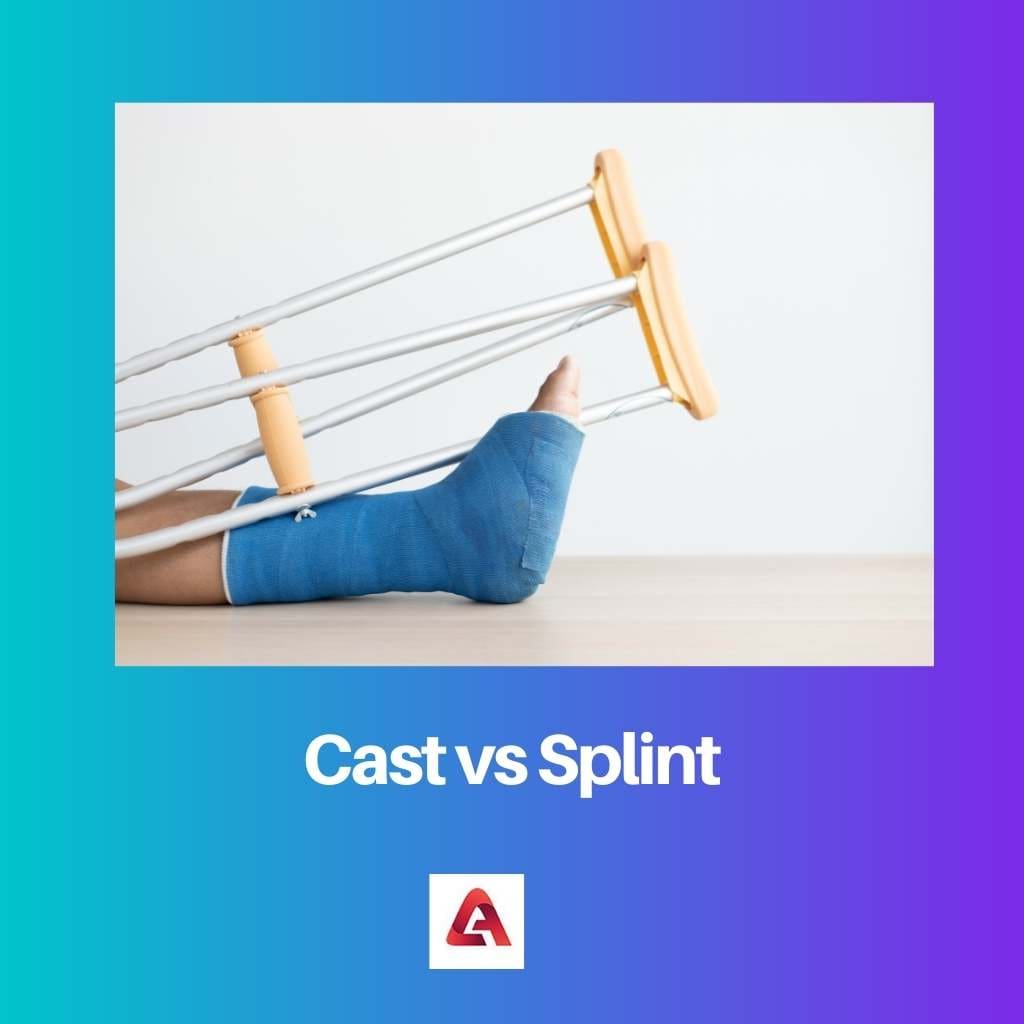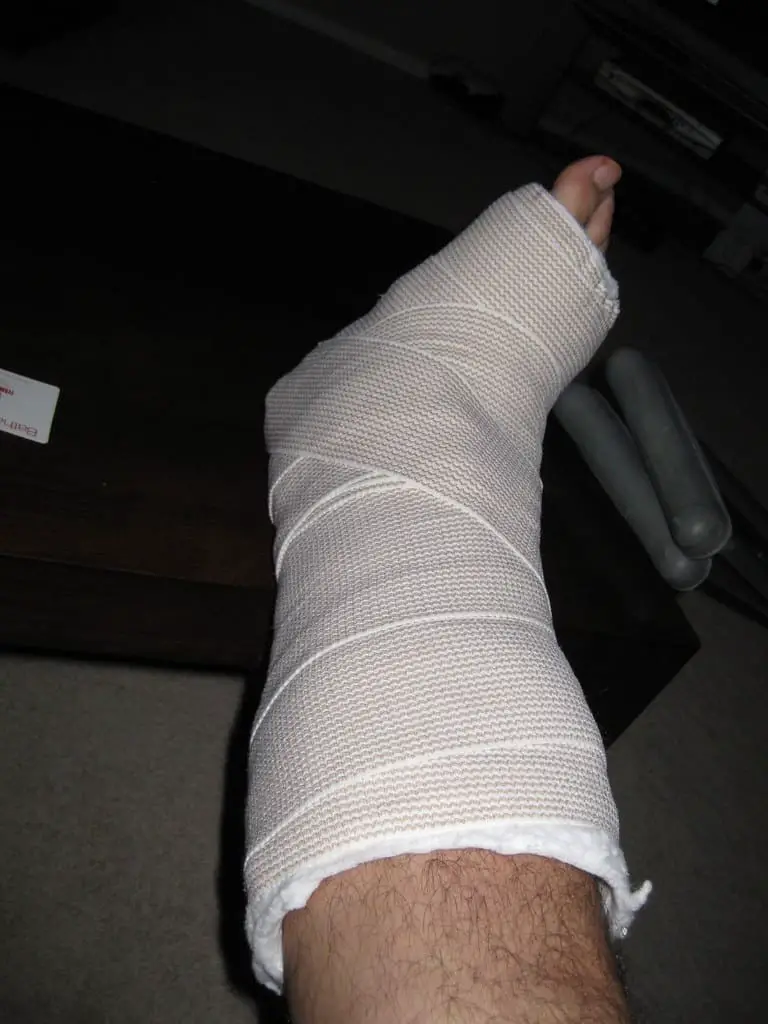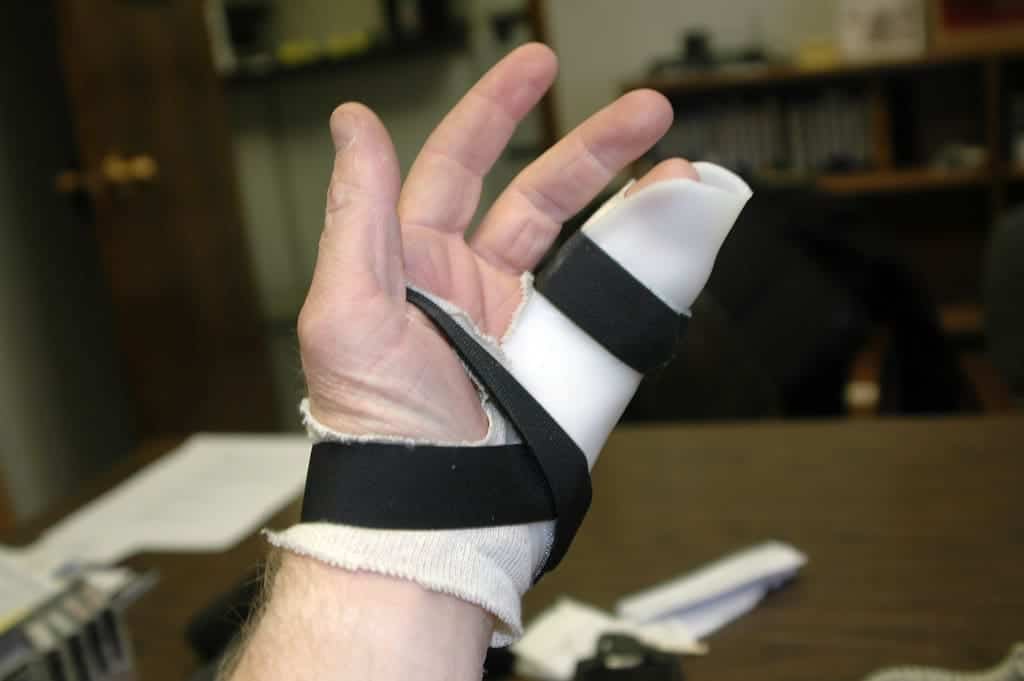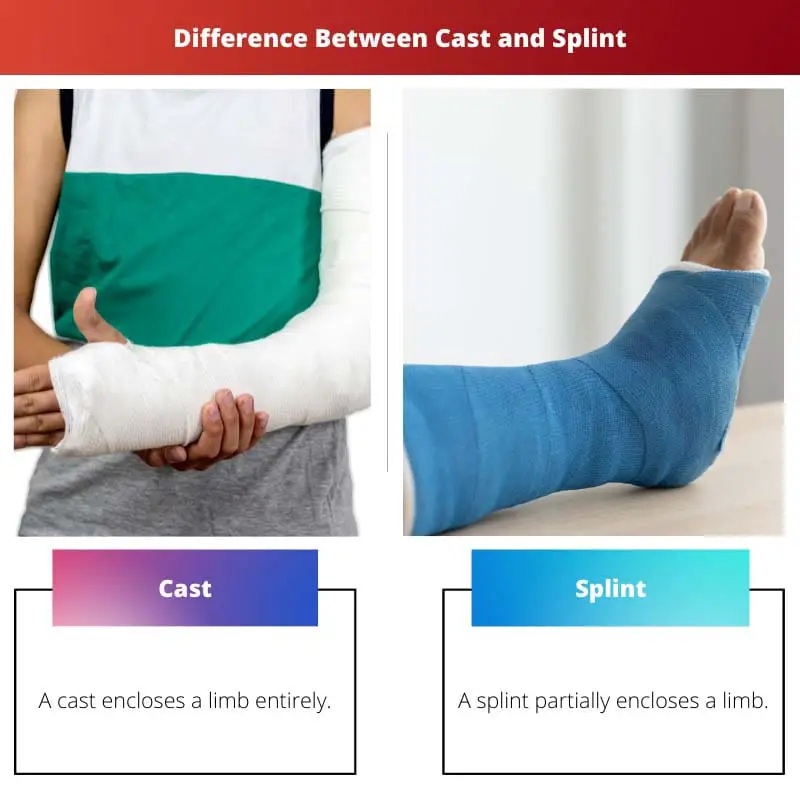Whenever we injure our limb or bone, we require a certain amount of medical attention to recover. A broken bone can lead to the disability of that part. It can lead to serious issues if not treated with care.
Key Takeaways
- Casts are rigid, custom-fitted immobilization devices made from plaster or fiberglass, while splints are semi-rigid supports made of metal, plastic, or foam.
- Casts provide more immobilization and support, while splints allow for more flexibility and adjustability.
- Splints are easier to apply and remove, making them suitable for temporary or less severe injuries, while casts are used for more serious injuries requiring longer immobilization periods.
Cast vs Splint
The difference between a cast and a splint is that cast is a custom-made tool that gets moulded over the swollen limbs in order to heal them. On the other hand, splints are not custom-made, but they do the same work. The cast is not adjustable, but splints can get adjusted.

A cast is a tool that is made of fibreglass and plaster, and it gets used to cure injury of bones and limbs. It keeps the limbs and bones unmoved and steady, which is very much needed to recover from a bone fracture or injured limb.
It is adjustable, and thus it can get altered when the swollen limb gets healed. It does not encircle the injured place entirely. It is fixed with the use of Velcro straps.
Comparison Table
| Parameters of Comparison | Cast | Splint |
|---|---|---|
| Definition | A cast encloses a limb entirely. | A splint partially encloses a limb. |
| Making | A cast is custom-made. | A splint is not custom-made. |
| Removal | To remove a cast, it has to get cut with the help of a blade. | To remove a splint, you need to unstrap it. |
| Adjustability | A cast can not be adjusted. | A splint can be adjusted. |
| Making time | Making a cast takes more time compared to a splint. | A splint takes lesser time to be made. |
What is Cast?
A cast is a medical tool that helps to heal an impaired limb or broken bone. A cast holds the limb and encloses it entirely. To heal from a limp or bone injury, one needs to keep their bone motionless; a cast helps to do that.
The cast is non-adjustable, and it makes sure that no movement takes place and the injury heals as soon as possible. Hence, the concern of the limp or bone movement can be eliminated from the mind. It is a part of orthopaedics.
Generally, casts are made of fibreglass and plaster. The removal of the cast includes cutting it off. In some cases, when the swollen limp gets recovers, the cast may become loose and get removed easily.

What is Splint?
Splints are an orthopaedic tool. A splint does not encircle an injured limb entirely as a cast does. It embraces the broken bone or injured limb to heal it. You can adjust a splint according to the swell of the limb.
As a splint hold the limb partially, it can be called a half-cast. A splint is fastened with Velcro straps. Even though splints appear to come with more advantages, you can not choose that overcast according to your preferences.

Main Differences Between Cast and Splint
- Splints get attached by Velcro straps, or sometimes even bandages are used. But the cast can not be fastened with Velcro straps as it is supposed to enclose the limb wholly.
- The only way to remove a cast is by cutting it off. But splits need to be unstrapped to get removed.

- https://www.cambridge.org/core/journals/international-journal-of-technology-assessment-in-health-care/article/costeffectiveness-analysis-of-cast-versus-splint-in-children-with-acceptably-angulated-wrist-fractures/E066283B5347D0455F5C8615E88F8A7D
- https://journals.lww.com/jaaos/fulltext/2008/01000/cast_and_splint_immobilization__complications.5.aspx




